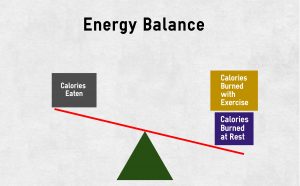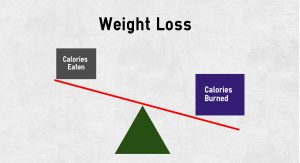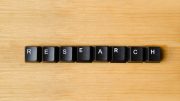Okay. Let’s start with the basics. If you understand the why and how of weight loss and weight gain then losing weight is an easy concept that is very difficult to maintain. Weight loss is not as easy as just pushing back from the table or not filling the feed bag. You will need to understand the macronutrients (fat, protein, carbohydrates and possibly alcohol) and have a good estimate for how many calories you should eat.
Calories are a measurement of the energy in food. Just like a watt of electricity will light a bulb or turn a motor, a calorie will help you build parts of your body or can be used to move your body. You need them to operate and to continue to live. A calorie to your body is like gasoline for your car.
Where do we get calories? The main sources for most people are carbohydrates, fats, and proteins. There are other sources such as alcohols. I chose to include alcohol to illustrate how dense it is in calories. One calorie is equal to 1000 kcal but we just call them Calories (note the capital). Most folks just drop the capital letter. You can click on the above image to see it larger.
Now that you understand the calories. Lets talk weight gain and weight loss. Our bodies need energy to move, make repairs, and many other processes. We get them in the form of calories from our food. So let me explain the basics of weight gain and weight loss. If you understand this, you will understand what you need to do to lose weight.
The Energy Balance is the key to weight loss and weight gain (Figure 2 above. Click for a larger image.). If you understand the basics, it will make dieting easier. The image of the balance above is like the teeter-totter we played on in the school yard as a kid. The good news is there are two kids on the side we need to be heavier. The bad news is it is hard to resist overeating so the left side of the teeter-totter always has the potential to have a heavier kid.
Now, let’s talk about weight loss and weight gain and calorie imbalance. I am going to simplify the right side of the balance by calling it just “calories burned”.
The above image (Figure 3) depicts what happens when you eat more calories than you burn. You will gain weight and your waist line will expand.
Figure 4 depicts the balance for weight loss. If you burn more calories than you eat, you will lose weight.
Figure 5 depicts the balance for no weight gain or loss. If you balance calories than you eat with the same as you burn, you will maintain he same weight.
So how much of each macronutrient should I eat and where do I get them?
I usually go with a 50/25/25/0% rule with 50% of calories from carbohydrates, 25% from protein, 25% from fat, and 0% from alcohol. I do not always make this ratio but I try. Remember that alcohol is an empty calorie so if you have it, you need to eat less of something else or exercise more.
I hope this article help you lose weight. If you understand the sources and density of each source in calories, it is easier to make smart choices. Good luck with making smart food choices.













Be the first to comment on "Biochemistry of Calories and Weight Loss"